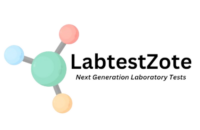The ongoing pandemic has shone a bright light on the critical role the laboratory plays in our healthcare system. With advancement of molecular technology, the SARS-Cov2 viral genome was sequenced within a month or so of the epidemic. Once this genome was shared to researchers around the world.
The main objectives of laboratory testing in covid-19 are
- Make a confirmatory diagnosis of covid-19 infection by demonstrating presence of viral specific RNA or Proteins.
- Assessing the severity of the disease
- Effect on other body systems.
- Confirm COVID 19 negative status.
- Epidemiological surveillance
1.Tests For Etiological Diagnosis
All suspected cases of Covid-19 must have been confirmed by laboratory testing. Different strategies are used to bring people to testing. These include mass testing campaigns, symptomatic testing, contacts testing among others. There are three types of tests available at the time of posting this article.
- Nucleic Acid Amplification test (NAAT) or the real time polymerase chain reaction (RT-PCR) detects viral genome from the patient’s respiratory secretions. This test has high specificity and sensitivity and is the gold standard test for SARS-COV2 virus. However, it’s expensive, technically difficult to carry out and require specially trained lab scientists. In Kenya and most African countries, it’s not available at point of care but only in specialised, central, research or university labs. For these reasons the test has a relatively long turn around time of about 48hours on average. Please refer to our detailed article on SARS-cov2 PCR testing here
- Antigen detection Rapid Diagnostic test. Africa CDC has recently released updated guidelines for antigenic RDT testing. This test detects viral antigen specifically the nucleocapsid, and can therefore be considered an alternative to NAAT. The advantages are shorter TAT of about 15min, increased access as a point of care testing, testing outside of laboratory settings, minimal requirement of equipment, and trained technical staff and lower cost.
- Antibody rapid diagnostic test detects antibodies produced by the body against the SARS Cov2 virus. Its main utility is in epidemiological surveillance, as it only tells us about past exposure and not current infection with replicating virus. As the science of Covid-19 evolves, rapid antibody tests may improve to have diagnostic utility. This would be a valuable weapon in Covid-19 diagnostics arsenal.
2. Tests for assessing disease severity and complications.
Several studies have shown about 80% of people who get infected with SARS-COV2 do not develop severe disease. About 10% develop mild-to-moderate symptoms while only 10% show severe respiratory and other systemic manifestations of the disease.
The test panel will vary from patient to patient and may include pretty much of the basic and advanced chemistry, serology and microbiology panels. Some of the tests used across board include:
- C-Reactive Protein (CRP)
- Complete Blood Count (CBC)
- Blood Gas Analysis (BGA)
- Urea /Electrolytes/Creatinine
- Coagulation profile/ D-Dimers
The other tests are determined by the patients clinical picture and the organ systems affected. These tests are employed together with other diagnostic modalities for example imaging.
3. Patient monitoring
The clinical course of covid-19 disease is very variable. Some patients progress rapidly to requiring intubation and respiratory support. THe majority luckily have a less severe course. As noted above,
4. Epidemiologic surveillance
respiratory, cardiovascular, gastrointestinal systems may be affected directly or indirectly. To illustrate, some patients may develop cytokine storm, which is then treated by high dose steroids. This predisposes the patients to getting opportunistic infections.
As noted in the discussion on antibody tests, assessing the extent, nature and evolution of the pandemic helps in tring to get ahead of the pandemic. Antibody studies in the population gives a more representative data on the true situation at the community level. This gives us a true measure of exposure to the Sars Cov-2 virus. We are then able to derive other important disease measures like attack rate, case fatality rate etc.
In conclusion, laboratory is an indispensable resource in management of Covid-19, from a clinical and public health perspective.
